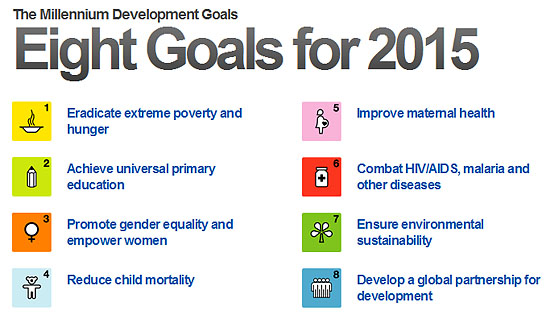Millennium Development Goals
At a Millennium Summit in 2000 the leaders of the richest countries present adopted the United Nations Millennium Declaration.
The Declaration asserts "that every individual has the right to dignity, freedom, equality, a basic standard of living that includes freedom from hunger and violence, and encourages tolerance and solidarity."
It had been realized by many including the multilateral agencies such as the UN, OECD, The World Bank and IMF that if these human rights were to be achieved a set of goals with measurable targets focusing on improving social and economic conditions in the world's poorest countries needed to be set.
This realization led to the establishment of the Millennium Development Goals (MDGs) in 2001.
By setting targets and indicators for poverty reduction on a set fifteen-year timeline, ending in 2015, it was hoped that the human rights highlighted in the Declaration would be achieved. There are eight goals with 21 targets and a series of measurable indicators for each target.
